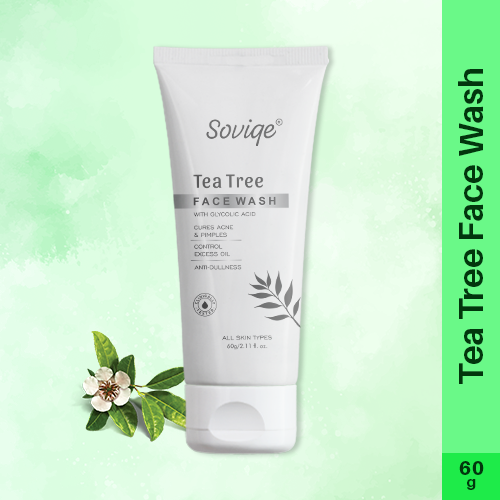When it comes to skincare, there’s no one-size-fits-all solution. What works wonders for one person can cause breakouts or irritation for another. That’s why it’s essential to buy skin care products that are specifically suited to your unique skin type. But with countless options available—cleansers, serums, moisturizers, toners, masks, and more—it can be overwhelming to know where to start.
This blog is your complete guide to understanding your skin type, learning what ingredients to look for (and avoid), and how to build an effective skin care routine that delivers real results. Whether you’re new to skincare or just want to refine your approach, you’ll find smart, simple steps that make choosing products easier and more effective.
Understand Your Skin Type
Before you buy skin care products, the most important thing you need to do is identify your skin type. Here's how to recognize which one best describes your skin:
-
Normal Skin: Balanced, not too oily or dry. Rarely breaks out and tolerates most products well.
-
Oily Skin: Shiny, especially in the T-zone (forehead, nose, chin). Prone to acne, clogged pores, and blackheads.
-
Dry Skin: Tight, flaky, or rough texture. Can feel irritated or itchy, especially after cleansing.
-
Combination Skin: Oily in the T-zone but dry or normal on the cheeks and jawline.
-
Sensitive Skin: Reacts easily to products, sun, or weather. May feel stinging, burning, or redness.
Once you identify your skin type, every product decision becomes more targeted and effective. Using the wrong product—even if it’s high-quality—can disrupt your skin care routine and lead to breakouts, irritation, or dryness.
Step 1: Learn the Basics of a Skin Care Routine
No matter your skin type, a solid skin care routine includes three essential steps:
-
Cleanse: Removes dirt, oil, and makeup.
-
Treat: Targets specific issues like acne, pigmentation, or dullness with serums or actives.
-
Moisturize: Locks in hydration and supports the skin’s barrier.
Bonus step: Sun protection (SPF) during the day is crucial, especially when using exfoliating or active ingredients.
Before you buy skin care products, make sure you understand how these steps work together and which products suit each step for your skin type.
Step 2: Match Ingredients with Skin Type
Once you’ve nailed down your skin type and routine basics, you can begin choosing products based on ingredients that are known to work well for your skin’s needs.
For Oily and Acne-Prone Skin:
Look for:
-
Salicylic acid
-
Niacinamide
-
Clay (kaolin, bentonite)
-
Tea tree oil
Avoid:
-
Heavy creams
-
Mineral oils
-
Coconut oil (can clog pores)
For Dry Skin:
Look for:
-
Hyaluronic acid
-
Glycerin
-
Ceramides
-
Squalane
-
Shea butter
Avoid:
-
Alcohol-based toners
-
Foaming cleansers that strip natural oils
For Sensitive Skin:
Look for:
-
Aloe vera
-
Oat extract
-
Panthenol (vitamin B5)
-
Fragrance-free formulas
Avoid:
-
Harsh exfoliants (scrubs, strong acids)
-
Fragrances
-
Essential oils
For Combination Skin:
Use:
-
Lightweight, oil-free moisturizers
-
Balancing toners
-
Niacinamide (works for oil and dry zones)
Avoid:
-
Products targeted only at one skin issue (e.g., only for dry skin or only for oily skin)
Always read labels carefully when you buy skin care products online or in-store. A little research can help you avoid wasting money or damaging your skin barrier.
Step 3: Start with the Essentials
If you’re overwhelmed by the number of available products, start with a minimal routine. Here’s a beginner-friendly routine for any skin type:
-
Gentle Cleanser: Pick one that doesn’t strip your skin of moisture.
-
Moisturizer: Choose based on your skin type—light gel for oily skin, cream for dry skin.
-
Sunscreen: Use SPF 30 or higher daily, even if you’re indoors.
Once your skin adjusts and becomes more stable, you can add actives like Vitamin C, retinol, or exfoliants. Always patch-test new products.
Step 4: Be Cautious With Trends and Influencers
Social media is full of influencers recommending the “next big thing” in skincare. While it’s fun to discover new products, don’t jump into buying something just because it’s trending. What works for someone else might not suit you.
Stick to proven ingredients, customer reviews, and scientific evidence. If you decide to try something new, add only one new product at a time and monitor how your skin responds.
When you buy skin care products based on your individual needs, rather than hype, you're more likely to see long-term, sustainable results.
Step 5: Shop from Trusted Sources
Whether you're buying from a local store or choosing to buy skin care products online, always pick trusted, well-reviewed sellers. Here's what to look for:
-
Official brand websites or certified retailers
-
Ingredient transparency: Avoid brands that hide full ingredient lists
-
Return and refund policy: Important if the product causes a reaction
-
Customer reviews: Especially from those with similar skin types
Some popular and trusted online platforms to buy skin care products include:
-
Nykaa
-
Amazon (with verified sellers)
-
Purplle
-
Dermstore (global)
-
The brand’s own website (like The Ordinary, Cetaphil, or Neutrogena)
Avoid sketchy websites, overly discounted products, or vague brand claims. If the deal seems too good to be true, it probably is.
Step 6: Be Patient and Consistent
No skin care routine gives overnight results. Most ingredients take at least 4 to 6 weeks to show visible changes. Be consistent with your routine, and resist the urge to try something new every few days.
Here are some tips to help maintain consistency:
-
Create a morning and night routine and stick to it
-
Don’t skip sunscreen, even on cloudy days
-
Don’t mix too many actives at once
-
Give your skin time to adapt before switching products
By patiently following a targeted skin care routine, you give your skin the best chance to respond and improve naturally.
Conclusion
Choosing the right skincare is not about following trends—it's about understanding your skin and giving it what it truly needs. When you take the time to identify your skin type and learn which ingredients work best for you, it becomes much easier to buy skin care products that deliver visible, lasting results. From cleansers to moisturizers and serums, every product should serve a clear purpose in your skin care routine.
Start simple, build gradually, and always listen to your skin. Don’t rush to try everything at once. Instead, invest in quality products that align with your unique concerns. Whether you shop online or in-store, being informed is the smartest way to take care of your skin.



